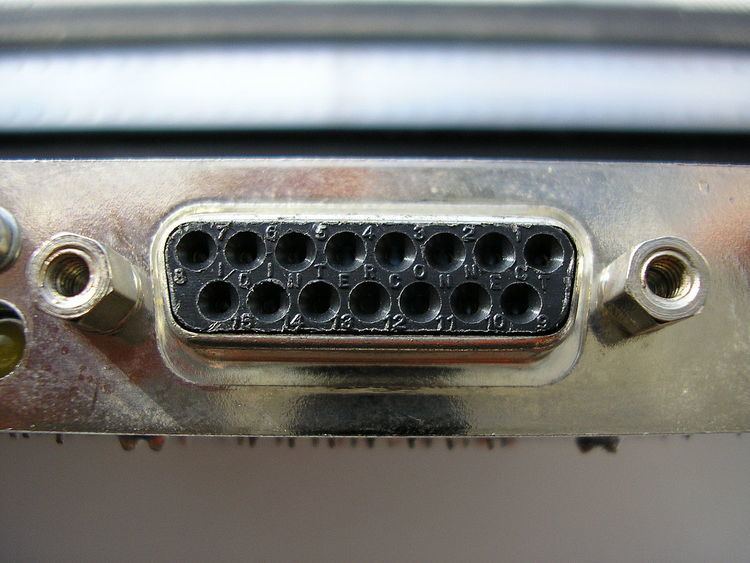 | ||
The Attachment Unit Interface (AUI) is a physical and logical interface defined in the original IEEE 802.3 standard for 10BASE5 Ethernet. In the OSI Model, this interface serves as the demarcation point between the Physical and Data-Link layers. The (optional) physical interface consists 15 pin connection that provides a path between an Ethernet node's Physical Signalling and the Medium Attachment Unit (MAU), sometimes known as a transceiver. An AUI cable may be up to 50 meters long, although frequently the cable is omitted altogether and the MAU and MAC are directly attached to one another.
AUI connectors became rare beginning in the early 1990s when computers and hubs began to incorporate the MAU, particularly as the 10BASE-T standard became more common and use of 10BASE5 (thicknet) and 10BASE2 (thinnet) declined. The electrical AUI connection was still present inside the equipment. By the mid-1990s AUI had all but disappeared as Fast Ethernet became more common (Fast Ethernet has an equivalent known as Media Independent Interface, MII). Gigabit Ethernet and 10 Gigabit Ethernet have respectively the GMII and XGMII standards which are equivalent to AUI.
A modified form using a smaller connector called the AAUI was introduced on Apple Macintosh computers in 1991, and its use discontinued in 1998.
Connector and signals
An AUI connector is a DA-15 (D-subminiature). It has a sliding clip in place of the thumbscrews normally found on a D-connector to hold two connectors together. This clip permits the MAU and MAC to be directly attached to one another even when their size and shape would preclude the use of thumbscrews. This clip is however frequently found to be awkward and/or unreliable.
